Salon
BagNewsSalon: The Great Oil Spill
The video above is an archive edition of Looking at America’s Great Oil Spill: An Interactive Panel Discussion exploring the visual framing of the disaster. The discussion was held Sunday, July 18 on the Open-i platform, an on-line classroom environment which facilitates live webinars about photojournalism utilizing audio, slideshows and text chat.
Open-i
Images and Selected Quotes:
Co-Produced for BagNews by Ida Benedetto
Do the images coming from the Gulf Oil Spill reflect the disaster or the limited access to the damage caused by the oil spill. Beyond the beauty of the photographs examined, how do they reflect access? How do they reflect the plight of those affected by the spill? How do the staged photographs of corporate and government leaders reflect the reality of the catastrophe? Are photographs which capture the unique and abstract beauty of some aspects of the disaster to be shunned or admired?
(photo: Win McNamee / Getty Images. caption: Reporter Anderson Cooper is reflected in oil filled water during a tour of areas where oil has come ashore May 26, 2010 in Blind Bay, Louisiana. As BP prepares to try and stop the oil leak with a ‘top kill’ method, the Louisiana coastline is reeling from the effects of the continued gusher.)
Cara: One of the things about this image that’s so compelling is the texture and you can see the structure of the oil in the water in ways that aren’t often communicated in other images…the textural viscous quality is pictured very nicely.
John: This picture underlies how difficult the logistics of getting around are in the Gulf. We photographed whoever we could find whether it’s workers or other journalists in the boat.
Paul: Does the story become about the celebrity or the disaster. Do we need the celebrity to make it an international event.
Erika: It’s important to continue to reflect back to humanizing this catastrophe because I think that with it being such a techonological catastrophe it’s very easy to look at the corporation and not at the human quality of it, and so in that respect portraying the relfection of a person is effective. But because it’s true that because it’s Anderson Cooper it lingers with this ongoing question focus on the press and the celebrity of that instead of the people who are being effected.
(photo: Kari Goodnough / Bloomberg via Getty Images. caption: Empty beach chairs rest on the sand as oil washes ashore in Orange Beach, Alabama, U.S., on Saturday, June 19, 2010. The BP Plc oil spill, which began when the leased Transocean Deepwater Horizon oil rig exploded on April 20, is gushing as much as 60,000 barrels of oil a day into the Gulf of Mexico, the government said.)
Jon: The parts to the right of the picture that are seemingly clear, and then that big cloud on the left, even without the deck chairs have a very ominous quality to it as well as the stains on the sand next to the very pristine sand. It illustrates the effect on tourism, but It’s got an inherent foreboding about it.
Michael: It seems to have a class resonance to it as well in that the beach is very wide and the chairs look very expensive. ….One message to me is that when we have these natural catastrophes, perhaps nobody is spared, from the top of the economic food chain to the bottom.
Nathan: We are so unused to seeing oil, it’s always in containment. We don’t see oil very much. Horrifying but it can be strangely beautiful. Seeing so much oil is just not normal.
Erika: One of the things I find so powerful about this image…..the line of chairs and umbrellas has a controlled and rhythmic quality as opposed to the chaos and uncontrolled quality of the oil and the water and just knowing how uncontrolled that force is …. there’s a really interesting comparison between these two elements that is important.
(photo: Charlie Riedel / AP. caption: A bird is mired in oil on the beach at East Grand Terre Island along the Louisiana coast on Thursday, June 3, 2010. A Brown Pelican is seen on the beach at East Grand Terre Island along the Louisiana coast on Thursday, June 3, 2010.)
Loret: The pelican on the left… it just resonates as a phoenix which doesn’t have any chance of rising. The fact that it’s still calling and still trying to life its wings is so horrifying to me.
Michael: These images were just really horrifying and ghastly…… These may be the iconic images from the crisis. The mummified bird which looks so much like a statue … it conveys a kind of dignity and timelessness. On one level you can see as a statue, something that would belong in a museum and to that extent it conveys a kind of history making resonance as much as it is also incredibly visceral and evokes a sense of horror.
John: Getting access to any part of this story was tough, particularly the birds. There’s a rescue center, Ft. Jackson center, but it’s quite something different to see them on the beaches.
(photo: John Moore / Getty Images. caption: Bags of oil collected from the beach await pickup May 25, 2010 at Elmer’s Island, Louisiana. Cleanup crews had worked for days to scrub the beach and dispose of the material. As BP prepares to try and stop the oil leak with a ‘top kill’ method, the Louisiana coastline is reeling from the effects of the continued gusher.)
John: This photo is symbolic of the idea that the worst was on the horizon. That this wasn’t over. That things were going to get worse before it gets better. And that was certainly the case. When you fly over the spill, it’s so vast. It’s very hard to capture images. Just showing the dimensions of it was very difficult
Michael: This picture is incredibly striking in its moodiness. It’s apocalyptic in its intensity yet more complex than that: you have the light and then the dark. Just when you feel this photo is speaking to hopelessness, the light, the breaking of the light conveys hope.
The booms look like human intestines…it’s not much of a jump to see a disaster that can literally rip your guts out.
Nathan: Most of us will only feel this crisis indirectly unless you are in the industry or down on the Gulf, you’re not going to feel it. Here’s this monstrous, enormous disaster and it’s remarkably intangible… the photographs are quite successful at making it tangible, the scale is almost impossible to be grasped.
(photo: Erika Blumenfeld.)
Erika: These signs were some of the first direct voices that we heard from people along the way. This image struck me…..I included the flag to convey the sense of “who’s responsible”?
There is a sense of the static. How can we move the oil? It has an uncontrolled quality. We look to our leaders to help contain the enormity of it and we’re not seeing that from our own nation or from BP.
Nathan: Like the oil slick photo with Anderson Cooper which is a very muddy mirror back upon us. This photo also reflects the oil spill back on to us as a community, not just BP. But what does this say about us?
Jon: This photo is a start of a very interesting series of photographs I’d like to see of the real manifestations of people finding it hard to feed their children. Otherwise, it’s just a headline.
(photo: Sean Gardner / Pool via Bloomberg. caption: Tony Hayward, CEO of BP, is under criticism this week after BP’s failure to stem the flow from the damaged well caused the biggest share price drop in 18 years that has led to speculation over his future.)
Jessica: What really strikes me about this is a lot of what these photographs are trying to do is visualize the un-visualizable. Not because oil is invisible but because of the nature of what’s going on. It takes a real skill and a particular kind creativity for photos to capture this. And a lot of what we are seeing is almost visual metaphors of what can we find that will represent the enormity of this because the enormity of it itself cannot be capture. Unlike Haiti where there are a lot of directly affected people.
Paul: If you were going to take a portrait of the CEO of BP for their annual report, the pointing off into the middle distance is a classic clichés of that corporate advertising. Even down to having the hat with the BP logo and the rig in the background.
Jon: In both images, Hayward and Obama, the propaganda, the set up nature of these images, they both conspire to work against them. Tony Hayward’s trying to look all regal and in control and strong and it completely subverts what’s actually going on. It subverts the message they are trying to put out because we know that’s not the case. With the Obama one, it’s the same choreography trying to get across different message that he’s very considered, that every tiny piece of oil matters, but again that seems the wrong attitude to take with such an enormous issue.
Erika: It’s so important as photographers and also as viewers not to be misled by the quality of an image versus the actualities of the situation. Obviously both of the images of these two leaders are trying to convey a certain affect, for propaganda. We need to look at their policies to really get the full story. There is a tendency with these iconic images to forget policy, to forget what’s actually going on on the ground that is in stark comparison with what this photograph of Obama may be trying to convey.
Paul: Tony Hayward looks off. Like he’s not very comfortable in those overalls and that helmet. Why is he wearing that on a boat anyway. Obama also looks like he’s in the wrong clothes. He also looks out of place in terms of the clothing he’s wearing. (muffled, but it’s a good discussion of the disconnect between image makers and the image photographers get). Photographers are in a constant battle with the image makers. You’re constantly trying to break the reality imposed on you by the image makers.
(photo:BP.)
Paul: This is like the ultimate citizen journalist, a completely remote digital camera because there’s no other way in which to get access to the scene…. Maybe they made a mistake in allowing this footage to be seen in the first place but once it’s out of the box, it’s an extraordinary visual metaphor for this uncontrollable leak.
Nathan: It is very disconcerting that because there’s been this endless flow and we’ve been able to observe that but it is in a way because though it’s been very concrete it becomes highly abstract because we can’t see what happens to all the oil that goes out of it. It has a really strange and unique metaphoric capacity.
Jon: It strikes me a bit like the Death Clock that ticked on 6th Avenue in New York City…..as a constant reminder as you’re not looking at it, it’s still ticking away. I think it cuts through all the propaganda. As long as this picture is still ticking away, it doesn’t matter what people are saying, the problem hasn’t gone away.
(photo: Benjamin Lowy / VII Network for GQ. caption: Tendrils and plumes of oil have covered the waters of the Gulf of Mexico, leaving a viscous mess in the open sea. These are close up images of the pools of oil that stagnate on the surface of the Gulf.)
John: It’s the same in any disaster, whether it’s environmental or human, some of the most striking images are also somehow the most beautiful as well. The dissonance between the horror and the beauty is sometimes what grabs people’s attention and keeps you looking at that photo a few extra seconds or coming back to it later.
Paul: When we see beauty in terms of evil or distress, our reactions are very complex. We sometimes think, “oh that can’t be right.” We too often respond with a very kind of knee jerk that we cannot have beauty in the face of horror and, yet, clearly you can. It’s a visual trope that comes up time and time again. We can read into these dramatic, epic situations a epic, awesome beauty. I think these two things can co-exist and, in fact, beauty can be a call to action and not just admiration.
Michael: I actually thought this image was fairly subversion and how much there is a tendency now to aestheticize the news. Especially seeing how so many images are just being reported by mainstream media on websites by just creating these huge numbers of photo galleries with captions and really little other context. It seems to me Lowy is on one level turning the disaster into an art poster or wallpaper or even a computer screensaver.
—
For more reference, see the extensive coverage we’ve given to the oil disaster on BagNewsNotes, as well as the two reports from the Gulf (“Creeping Doom” and “The Ocean on Fire“) filed by BagNewsOriginals editor, Alan Chin.
The Full Edit
Take a closer look at some of the images from our larger photo edit.
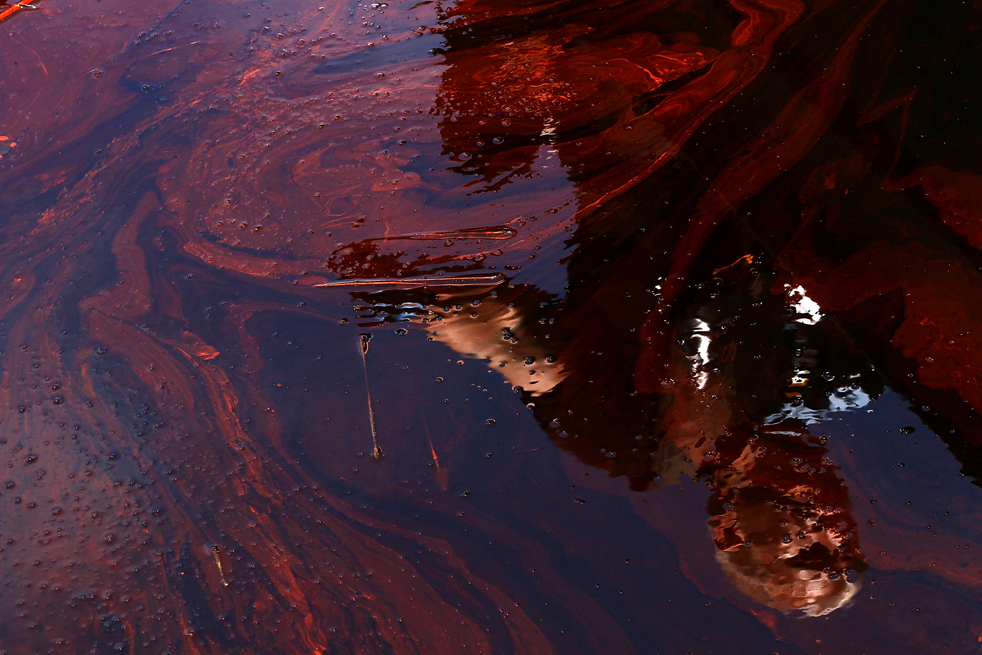
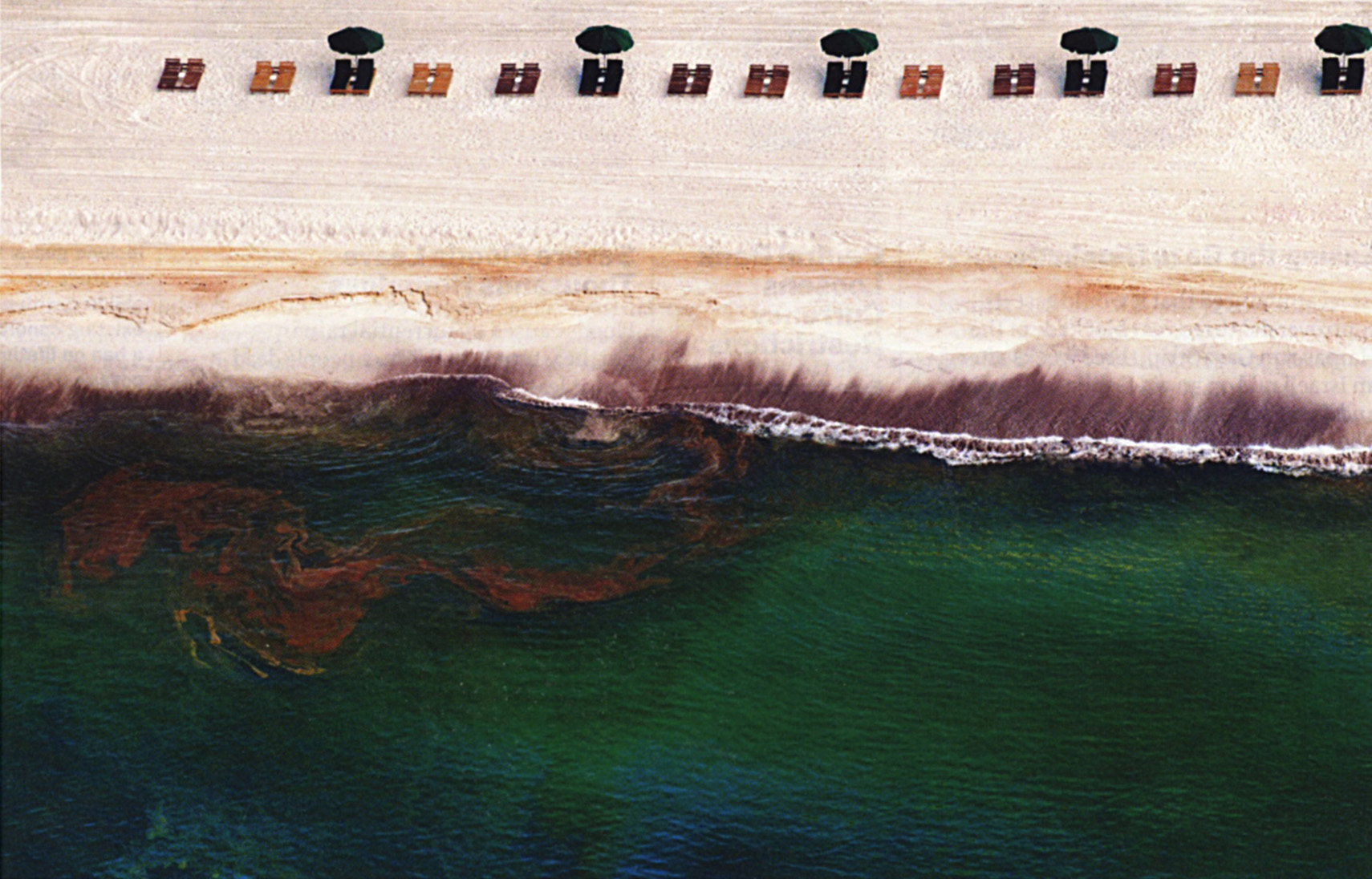

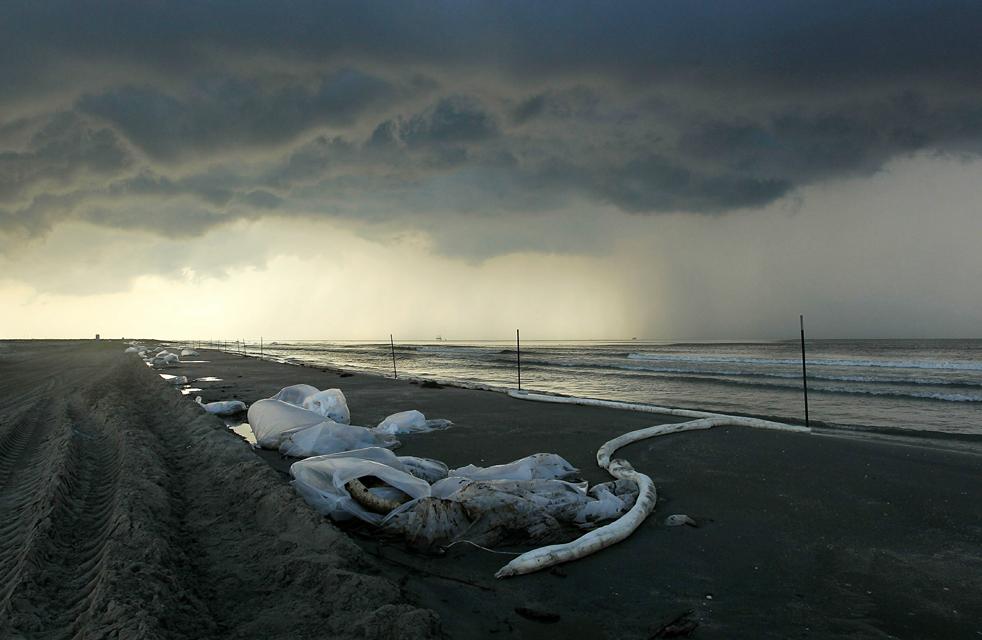
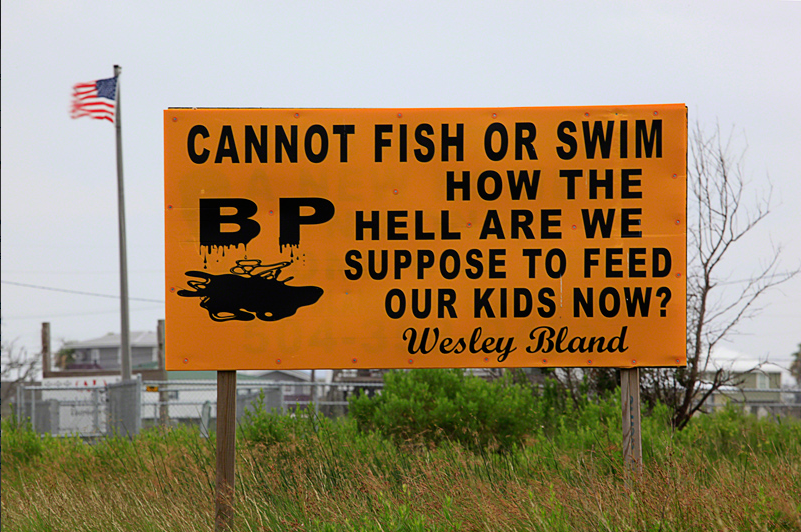
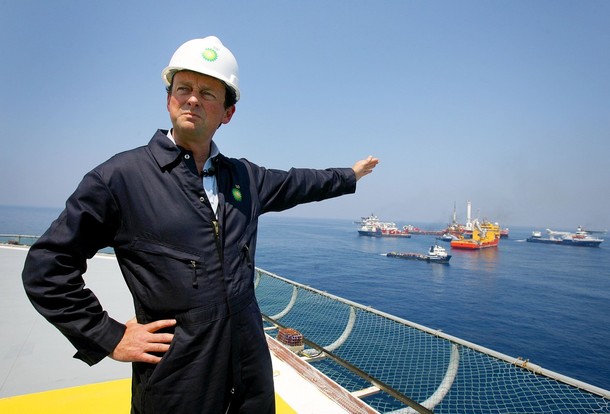
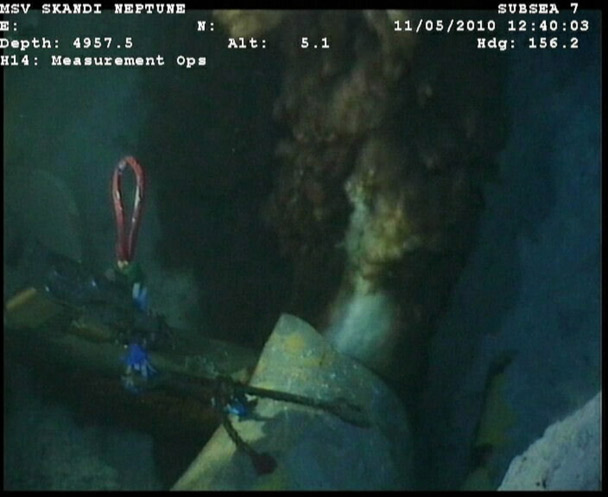
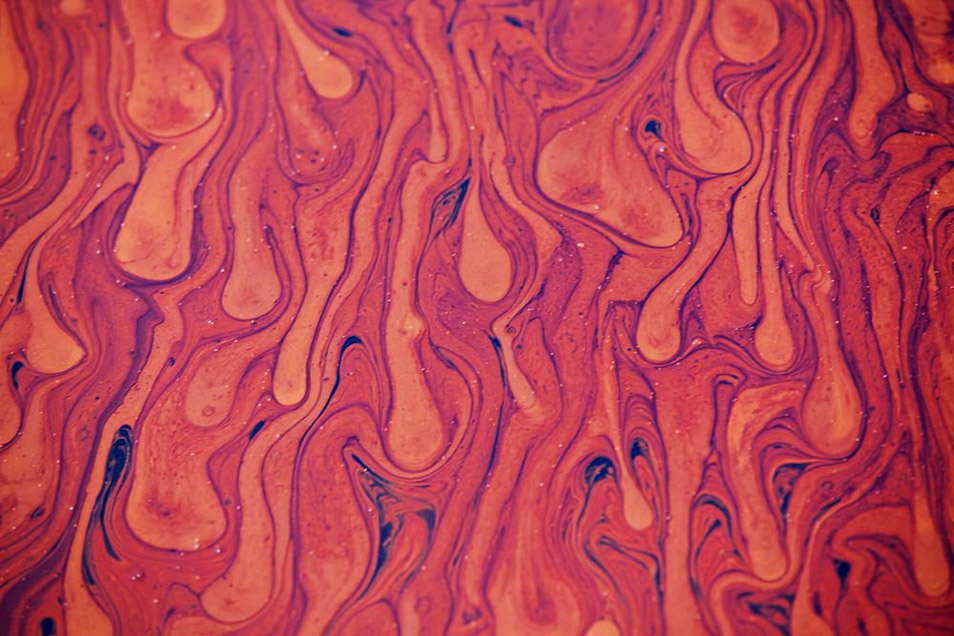






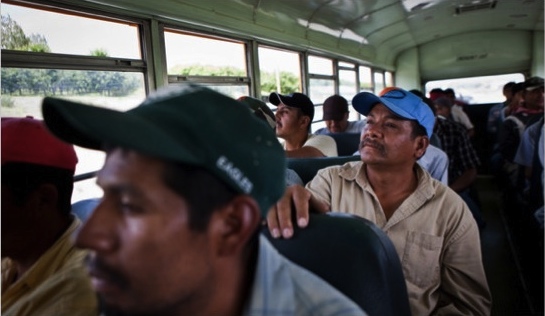

Reactions
Comments Powered by Disqus